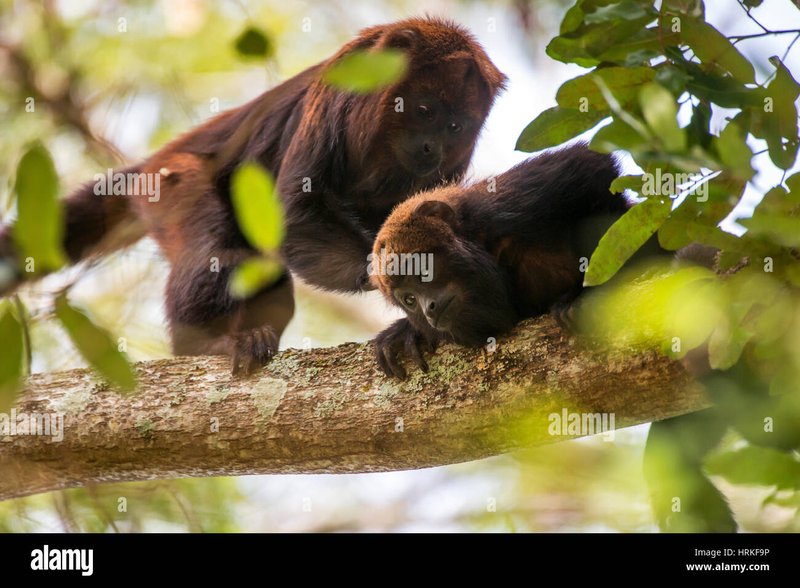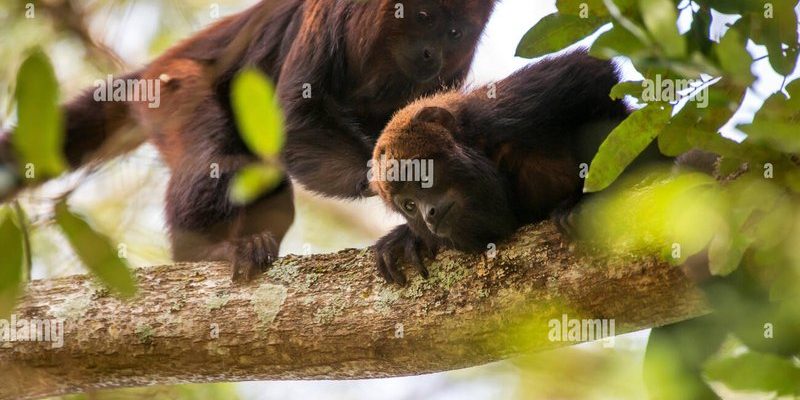
The guariba is more than just a quirky animal; in many cultures, it symbolizes strength, connection to nature, and sometimes even a mysterious bridge to the spiritual world. Imagine a colorful tapestry woven with threads of history, myth, and human experience. That’s what the stories about howler monkeys represent. Let’s explore how these fascinating primates dance through the hearts and minds of different cultures.
The Howler Monkey’s Role in Indigenous Beliefs
In many indigenous cultures, the guariba holds a significant place, especially in South America where they are native. Tribes like the Guarani see these monkeys as messengers between the earthly and spiritual realms. Their loud calls echoing through the jungle aren’t just noise—they’re believed to communicate with the spirits of the forest.
You might be wondering why this connection exists. It’s simple: the howler monkey’s vocalizations can be heard for miles, making them a symbol of the unseen forces in nature. This idea of being a bridge between worlds highlights how deeply rooted nature is in indigenous beliefs. For these communities, the sounds of the guariba are not just animal calls; they are an integral part of their spiritual landscape.
Furthermore, many tribes use the howler monkey in their storytelling traditions. In these tales, the monkey often represents wisdom or guidance, teaching lessons about community, respect for nature, and the balance of life. When you think of it, the guariba isn’t just an animal; it’s a storyteller, a teacher, and a spiritual guide wrapped into one.
Howler Monkeys in Modern Folklore
As we move into modern times, the guariba continues to inspire storytellers and artists alike. In folklore, they are often depicted as tricksters or wise old sages. Their playful yet wise demeanor lends itself to many delightful stories, reminding us all that life is a delicate balance between fun and seriousness.
For instance, Brazilian folklore often features the howler monkey as a character that outsmarts other animals. It’s a classic tale of wit triumphing over brute strength. These stories not only entertain but also impart moral lessons about intelligence, creativity, and resourcefulness—qualities we all admire.
You can see the influence of the guariba in children’s books and animated films too. Just think about how these characters might introduce kids to the wonders of wildlife while embedding valuable lessons about preserving nature. By blending entertainment with education, these stories help the next generation appreciate the cultural and ecological roles of the howler monkey.
Artistic Representations of Howler Monkeys
Art is another rich avenue where the guariba makes its mark. From traditional paintings to modern sculptures, artists across various cultures incorporate howler monkeys into their work. The vibrant colors and expressive forms of these creatures translate beautifully onto canvas, often symbolizing freedom and the untamed spirit of the jungle.
In many cultures, these monkeys appear in crafts and textiles, representing local wildlife and highlighting the beauty of biodiversity. For example, in some Brazilian communities, local artisans create intricate masks inspired by the howler monkey, used during festivals to celebrate nature and cultural heritage.
These artistic expressions foster a deeper appreciation for wildlife and inspire conversations about conservation. Art becomes a medium through which the cultural significance of the guariba is preserved and celebrated, encouraging viewers to reflect on their relationship with nature.
Folklore and Conservation: The Need for Balance
As captivating as the guariba is in culture and folklore, there’s an important conversation brewing around conservation. The rich stories and vibrant representations need to come hand in hand with real-world action to protect these incredible creatures. With habitat loss and climate change threatening their existence, the cultural narratives could become just that—stories, unless steps are taken to preserve their habitats.
Conservation efforts often highlight cultural connections to wildlife. Storytelling plays a key role in this because addressing environmental issues requires not just awareness but emotional engagement. When communities recognize the cultural significance of the howler monkey, they are more likely to participate in conservation actions.
You might notice that in many educational programs, these stories about the guariba are shared to foster enthusiasm and awareness. By connecting the dots between culture, ethics, and environmental action, people can see how intertwined our lives are with the natural world, driving home the importance of safeguarding it for future generations.
The Guariba in Global Popular Culture
Beyond local folklore and traditions, the guariba is making its way into global popular culture. You’ve probably heard sound effects from these monkeys in nature documentaries or seen them in wildlife conservation campaigns. Their calls are iconic, and they often serve as a soundtrack for jungle adventures in movies and games.
In these representations, the howler monkey is usually portrayed as a guardian of the forest, underscoring themes of protection and survival. This not only entertains but also raises awareness about the issues they face and the importance of conservation.
The migration of the guariba into pop culture signifies a growing appreciation for wildlife, encouraging audiences worldwide to learn more about these fascinating creatures. Each portrayal serves as a reminder of the untamed beauty of the rainforest and the need for its preservation.
The guariba is more than just a curious creature swinging through the trees; it’s a symbol of cultural richness, ecological importance, and the stories that connect us all. Whether they’re characters in folklore, subjects of art, or voices for conservation, these monkeys have woven themselves into the fabric of many cultures.
As we reflect on their legacy, let’s remember that preserving their habitat is vital not just for the monkeys, but for the stories, culture, and diverse ecosystems they represent. Next time you hear a howler monkey’s call, think of it as a reminder of the intricate connections between nature and culture. Embrace these wild storytellers, and let their voices inspire you to take action in any small way you can to protect our natural world.

